Hall of Fame jockey Gary Stevens is back in the saddle. In 2013, he got his racing season off to a roaring start at Santa Anita Park in Arcadia, California, winning three straight races in the second half of February. Stevens took the measure of Bob Baffert-trained Book Review in the $200,000 Santa Maria Stakes (G2).

Retired Jockey Gary Stevens Comes Back at Santa Anita
by BAHelberg
Gary Stevens retired twice from riding Thoroughbred racehorses, pursued an acting career (Seabiscuit) and became a television commentator, but he missed the Sport of Kings.
Stevens On Fire at Santa Anita
"I had that feeling"
"It was so sweet," Stevens told interviewers following his win aboard Great Hot in the Santa Maria Stakes for fillies and mares February 16.
The 1-1/16 miles were no problem for five-year-old Great Hot, who was racing with blinkers for the first time. She held steady in deep stretch under the experienced hand of Stevens as Book Review gave hard challenge. Great Hot had gone immediately to the lead as the race's 9-1 bet.
Stevens said he thought the others weren't speedy enough to catch his mare if she took the lead from the get-go. He gaged the pace correctly. Great Hot loped into a 1-1/2 lengths lead with easy fractions through three-quarters, :23.94, :48,18, and 1:12, and no one was able to menace her as she cruised at the rail all the way to the wire.
Also in February of the 2013 season at Santa Anita, Stevens guided Purim's Dancer to victory in the Wishing Well Stakes, and piloted Slim Shadey past all comers in the San Marco Stakes (G2T). Great Hot, sired by Orientate and foaled out of That's Hot, by Seeking the Gold, provided the jockey with his fifth career win in the Santa Maria Stakes.
Stevens, elected with the inaugural class to the Washington (state) Thoroughbred Racing Hall of Fame in 2003, had been absent from riding the races for seven years and had become a familiar face as a television commentator at America's Triple Crown series and at other major races.
"It feels good," Stevens said of his fifth win in the Santa Maria. "I've had that feeling before," he claimed and elaborated that "that feeling" is what he missed about Thoroughbred racing and the reason he returned to the irons.
From Idaho to Kentucky Derby Fame
It Was Horses from Day One
Perhaps female Thoroughbreds were destined to become the bedrock of Gary Stevens' racing success, for it was Winning Colors in the 1988 Kentucky Derby who gave him his most memorable racetrack triumph. The three-year-old filly took the roses off the backs of sterling company, including Forty Niner, who placed, and Secretariat son Risen Star, who settled for show.
Although it was Risen Star who chased his daddy's shadow to the wire in the Preakness Stakes and the Belmont Stakes in 1988 under Eddie Delahoussaye, Winning Colors did finish third in the Preakness.
"No question about it," Stevens says in answer to the question of what is the most memorable ride of his career: it's Winning Colors in that 1988 Derby.
Stevens, a native of Idaho, was introduced to horses from day one by his Thoroughbred- and Quarter Horse-training father. However, the sport of Thoroughbred riding didn't come easy for young Gary. At seven, he was diagnosed with a debilitating hip socket joint disease, Legg-Calve-Perthes Syndrome. For nineteen months, he wore a metal brace on his right leg and heard the fearsome news that he may never walk again without pain.
But by the age of 14, Stevens was riding Quarter Horses, and at 16 he got his first Thoroughbred ride aboard Little Star. He won.
At the Longacres race course in Washington state, Stevens quickly began to separate himself as a rider. In 1982, he won 95 races and was the third winningest jockey on the season. The next year he won the riding title with 168 victories. In 1984, he established a consecutive win streak by scoring with at least one Thoroughbred each day for 31 straight days.
Want to Read More About Gary Stevens or Riding Thoroughbreds?
 | Stolen Seasons - How Maine Sports Survived the COVID-19 Pandemic |
The Answer to Gary Stevens and Seabiscuit is...
False
Gary Stevens, champion jockey, played the part of the Iceman, jockey George Woolf, in the 2003 film Seabiscuit.
Based on Laura Hillenbrand's excellent best-selling book -- Seabiscuit: An American Legend -- (2001), the film carried through on how three men, Charles Howard, who owned Seabiscuit, Pollard, who rode him, and Tom Smith, who trained him, came together in historic fashion to make Seabiscuit a winner.
Sesbiscuit was a grandson of Man o' War, sired by Man o' War son Hard Tack. A mare out of the unraced Whisk Broom II, Swing On, was Seabiscuit's dam.
Originally, Seabiscuit was trained by the renown "Sunny" Jim Fitzsimmons, who worked for Mrs. H.C. Phipps and Wheatley Stable, where the colt was bred. But Seabiscuit was an early loser and difficult to train. Fitzsimmons gave up on him.
Enter Charles Howard, who bought Seabiscuit, and, from two different unlikely locations, found Smith and Pollard. The three men formed a working alliance that defied all odds for success.
The story of this popular race horse from the 1930s has many twists and turns, perhaps done more amazing than the fact that Seabiscuit became Horse of the Year in 1938 when he destroyed another Man o' War son, 1937 American Triple Crown winner War Admiral, in a much publicized match race.
Learn More About Seabiscuit and His Historic Team
 | Seabiscuit |
 | Seabiscuit: An American Legend |
 | Seabiscuit (Widescreen Edition) |
Triple Crown Woes and A Cup
Agony and Ecstasy
In 1995, Stevens won 16 grade one races with Thoroughbreds on American tracks, including the Kentucky Derby and the Belmont Stakes with Thunder Gulch. That followed his glory years in the 1980s, when he won riding titles at Hollywood, Del Mar, and Oak Tree. But it was in 1997 and in 1998 when Stevens added racing hardware to his trophy case that every rider dreams about from his first ride to his last.
Stevens met the horse who became his all-time favorite ride, Silver Charm, in 1997. He was a silver steed who took Stevens three-quarters of a length shy (to Touch Gold) of the 12th ever American Triple Crown. (The search is still on today for America's 12th ever Tripler.)
At age 34, Stevens was inducted into the National Museum of Racing and Hall of Fame in 1997.
In 1998, Silver Charm and Stevens went to Dubai to compete in the world's richest Thoroughbred racing carnival. They triumphed there and later in the fall placed second in America's richest event, the Breeders' Cup Classic. In between those two events, Stevens piloted Victory Gallop in the Belmont Stakes. Experiencing the shoe on the other foot, Stevens and his mount prevented Real Quiet from winning the elusive 12th Crown, nipping the seeker and jockey Kent Desormeaux at the wire.
Point Given gave Stevens victories in the Preakness and in the Belmont, a 12-length romp, in 2001. But the Thoroughbred had failed to perform as well as expected in the Kentucky Derby, a loss that remains, Stevens has said, the one he most regrets. All totaled, Stevens won eight Breeders' Cup events and took eight mounts to victory in the American Triple Crown races.
In between the triumphs with Silver Charm and the rides on Point Given, Stevens had retired briefly, stating that continuing surgeries on his knees were wearing him thin. With riding on hold again after Point Given, Stevens acquired the role of "The Iceman" George Woolf, the jockey who rode Seabiscuit to fame over War Admiral in 1938, in the movie Seabiscuit, based on Laura Hillenbrand's best selling book.
Stevens' autobiography, The Perfect Ride, apparently didn't complete his riding career, as he is once again chasing that dream for perfection upon the back of a 1,000 pound, four-legged partner.
Thumbnail
The thumbnail photo on this post is courtesy of Wikipedia and is reduced from a photograph of an original creation of Currier and Ives for use on Wikipedia.
You might also like
Golden Gate Jockey Russell Baze Tops 50,000 RidesWith no thoughts for retirement, champion horse racing jockey Russell Baze in...
Jockey Ramon Dominguez Continues Skull Fracture RehabThoroughbred Eclipse Award jockey Ramon Dominguez continues a slow rehabilita...
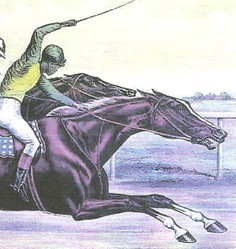

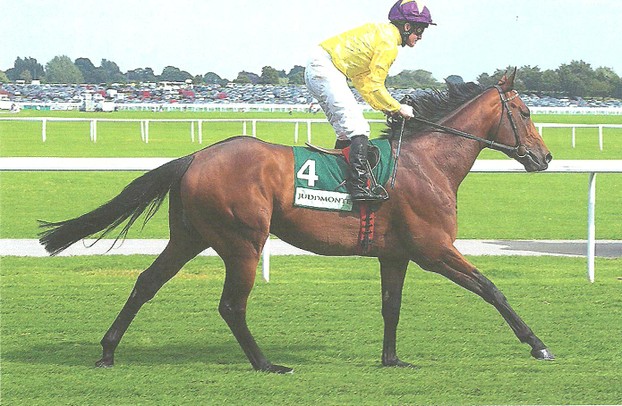

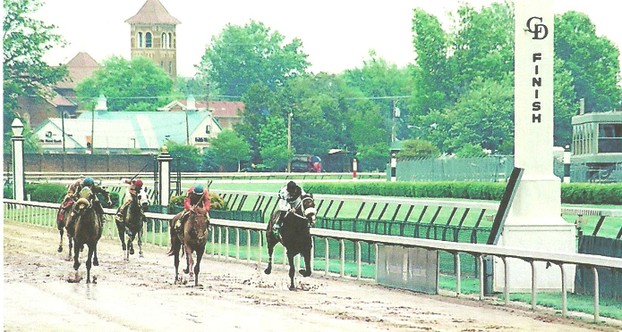
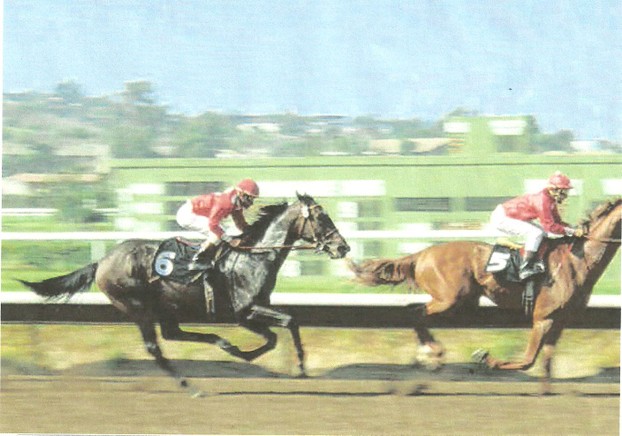
 Shoemaker's 23 Kentucky Derbieson 09/04/2018
Shoemaker's 23 Kentucky Derbieson 09/04/2018
 California Chrome Becomes New Thoroughbred Money Leaderon 04/08/2016
California Chrome Becomes New Thoroughbred Money Leaderon 04/08/2016
 American Pharoah Comparisons to Other Triple Crown Winners of Horse Racingon 07/17/2015
American Pharoah Comparisons to Other Triple Crown Winners of Horse Racingon 07/17/2015
 Jockey Ramon Dominguez Continues Skull Fracture Rehabon 02/24/2013
Jockey Ramon Dominguez Continues Skull Fracture Rehabon 02/24/2013

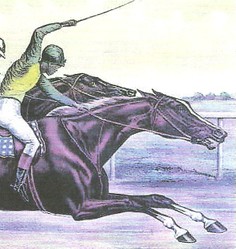
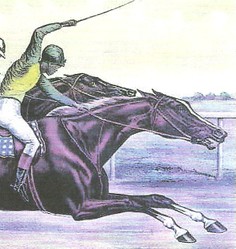
Give Us Your Thoughts on Gary Stevens, Seabiscuit, or Thoroughbred Racing